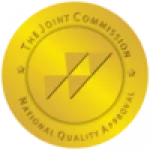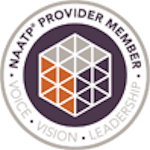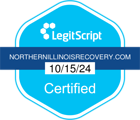The dangers of stimulants are growing with each year, increasing the need for stimulant addiction treatment options. Prescription medication abuse and cocaine use have become more popular, and stimulant use trends have paralleled deaths with other substances. Stimulants are a Schedule II controlled substance by the DEA and there are no approved medications for stimulant withdrawals.
Stimulants are commonly misused by students and athletes. Young adults may be at risk of stimulant addiction. For example, prescription stimulants may be used to treat a person’s attention deficit hyperactivity disorder. Prescription stimulants are known to be misused for drug abuse.
Stimulants include:
- Methamphetamines
- Amphetamines
- Cocaine
- Methylphenidate
- Caffeine
Side effects of stimulant use can result in:
- Increased alertness and energy
- Irritability or mood swings
- Delusions and hallucinations
- Sudden changes in heart rate and blood pressure
- Depression and anxiety
- Rambling speech
- Increased risk-taking behavior
- Nausea
- Loss of appetite


The repeated behaviors to maintain the normal levels of dopamine cause dependence. The dangers of stimulants erode the lives of the user, causing withdrawal symptoms. Stimulants are often used in polydrug use.
For example, the mental and physical processes of cocaine addiction can lead a person to form risky behaviors. Mixing cocaine with alcohol or mixing cocaine with heroin (called a “speedball”) can pose lethal consequences.
Long-term stimulant use can present drastic effects on the brain and cardiovascular system. Depending on the method of use, the dangers of stimulants can affect the nasal cavity and blood vessels. Behavioral therapies are the best line of defense with stimulant addiction treatment.
What Are the Signs of Stimulant Addiction?
Signs of a stimulant addiction may include some of the following:
- Increased self-confidence
- The decline in personal hygiene (Ex. meth mouth)
- Disturbance of sleeping patterns, insomnia
- Spending time recovering from stimulant use
- Sudden weight loss or change in eating habits
- Increased difficulty at work and school
- Increased difficulty concentrating
- Financial problems
- Dilated pupils
- Isolation

How Common is Stimulant Abuse?
Cocaine and methamphetamine are notorious for rapidly forming addictions in crack and crystalline forms. Therapeutic prescription stimulants may be kept long-standing, but taking the drugs without a prescription significantly increases the likelihood of addiction. It is alarming that stimulants are often misused.
Illicit drugs can introduce short-term and long-term effects that vary per substance. For example, long-term stimulant abuse may require medical treatment to handle the adverse health outcomes.
However, a person can become dependent on illicit stimulants yet find ways to perform normal functions. Caffeine is a commonly used stimulant drug that does not usually cause the person to enter into conflicts with family members or steal.
Substance abuse tends to have harsh effects on the body that cause the person to experience a withdrawal period when the substance is no longer in their body. Treatment centers work carefully to make sure the person with substance abuse and mental health disorders is not in as much pain compared to before.
Some common stimulant withdrawal symptoms include:
- Fatigue.
- Psychomotor retardation or agitation.
- Uncomfortable dreams.
- Inability to sleep or sleep excessively.
- Increase in appetite.
Other signs and symptoms that you might experience while withdrawing from stimulants include:
- Dehydration
- Suicidal ideation
- Weight loss
- Chills
- Cravings
- Anxiety
- Irritability
- Impaired memory
- Dulled senses
- Loss of interest in fun activities (anhedonia)
- Lack of interest in social interactions
Staging an intervention will require a strong support system and plan of action. The intervention process can be uncomfortable, especially when watching a loved one endure so much. Seek help from a professional interventionist or counselor to provide you with more details. There is a chance the subject will deny their substance use.
Have a plan for the person to receive treatment for stimulant addiction. It’s best to stage the intervention in a neutral setting, with friends or close co-workers.
It could help to do research with them or offer to transport them to support group meetings. The severity of their addiction will dictate the stage of care they need. Practice what you are going to say to the person struggling with stimulant addiction.
It’s recommended that you approach the person with facts about their substance use. Educating yourself about the specifics of the addiction will only improve your chances of reaching them. Remind them that you’re only there for support through this difficult time. They will eventually have to recognize the depths of their substance use disorder.
Encourage them to see treatment as an opportunity to grow and learn from their substance use disorder. The language used to incorporate addiction can be jarring and inspire shameful feelings in the person. Remember to use “I” statements to express how their substance use has affected you and their relationship.
Resentment and hurtful expressions may come into play. Recognize that these interactions only promote more conflict. Seeking treatment for substance use requires a handful of courage and some people are not ready to take that step. If the person refuses, you have an opportunity to regroup for another intervention.
Stimulant Rehab Center in Illinois
Addiction has no cure but relies on your ability to look within to develop strength. Accessibility is a key point for those seeking addiction treatment. Escaping the societal pressures and stigmas of addiction treatment can liberate you from these coping mechanisms.
To manage the withdrawal symptoms, a detox will be required. Detoxification is the method of removing toxic substances from the body to nourish treatment. Detox is the first stage of addiction recovery, setting the foundation for your progress. The side effects of stimulants can leave your body without vital nutrients and minerals.
Individuals who are beginning the journey through recovery may not know exactly where to start at first. But, here at Northern Illinois Recovery Center, we offer our patients the ability to safely and comfortably end substance use. Our detox program can help individuals begin working toward total freedom and abstinence from alcohol and drugs.
Ending substance use often comes with serious and numerous challenges. Withdrawal symptoms can be moderate to severe. In many cases, the discomfort of withdrawal is enough to cause individuals to relapse and return to alcohol or drug use.
In an effort to ease the pain or avoid the discomfort, people find themselves back in an unhealthy cycle of addiction. Thankfully, however, a professional detox program can help prevent this from happening.
While going through the detoxification process, our patients have the advantage of receiving medical attention. As they withdraw from drug or alcohol use, individuals can rely on the expertise and professionalism of our addiction treatment specialists. The detox process is rarely easy, but it is usually one of the most helpful ways to begin the recovery process.
Once detox is complete, recovering individuals can expect to be physically free from substance abuse. Still, it is important for them to become emotionally and mentally free from substance use behaviors and patterns. This is where addiction treatment programs, such as residential and outpatient programs, come into play.
An inpatient treatment program is designed to provide a trigger-free environment for the patient to recover. Inpatient treatment programs are suited for moderate to severe cases of addiction. 24/7 care is provided by trained medical staff to evaluate your progress.
Inpatient treatment programs are intensive, providing psychotherapy and wellness therapies to condition the body without substances. This can be a discomforting process for some, especially without a support system. The average length of stay at an inpatient residence is 30 days, although 90 days is recommended in some cases.
Outpatient treatment programs are an alternative to inpatient treatment programs. Although less intensive, outpatient treatment programs are vital tools for addiction recovery services. The average length of stay at an outpatient residence is 30 days, but it depends on your case.
Outpatient treatment programs are best suited for those who do not have a support system to care for them during this period. Outpatient programs are a way to stay connected to your close ones and receive treatment.
For instance, parents with a substance use disorder may fear losing their children due to the time spent in treatment. Outpatient treatment programs offer psychotherapy among other amenities to guide you.
Intensive Outpatient Treatment Programs (IOPs) are more structured than outpatient treatment. For those with moderate cases of substance use, IOPs can help you stay on a straighter path with careful examination. The sessions in an IOP are carried out on a five-day basis for six to eight hours.
Partial hospitalizations are also known as “day programs.” Partial hospitalization programs introduce a patient to quality care comparable to an inpatient residence. The patient will attend structured treatment sessions between six and eight hours.
Partial hospitalization has been used to treat individuals with mental health disorders. Relapse prevention skills and contingency management are common features of this model of treatment.
Withdrawal symptoms can be exhausting on the body. In moderate to severe cases of addiction, medication-assisted treatment can be administered to alleviate the symptoms at rehab facilities. Individuals with pre-existing conditions can receive medication while they are in treatment. Pregnancy and allergic reactions must be evaluated by the staff to prevent long-term effects.
The behavioral treatment process for substance use disorders must take into account a person’s mental health. For example, individuals with mental disorders such as bipolar disorder may develop substance use disorder as a means to self-medicate.
A mental health services administration in addiction recovery can help improve the recovery process with the help of individual therapy, group therapy, family therapy, support groups, and more.
Insurance Verification
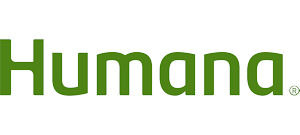
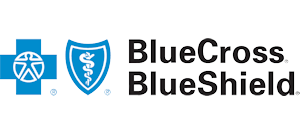

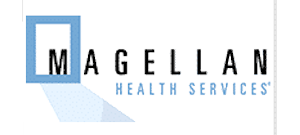
You’re Destined to Heal at Northern Illinois Recovery Center
If you or a loved one are struggling with a substance use disorder, contact us today. We are here to help you find total freedom from addiction. Our mission is to assist you in the recovery process and walk with you every step of the way. Reach out to us to begin pursuing an addiction-free life.

